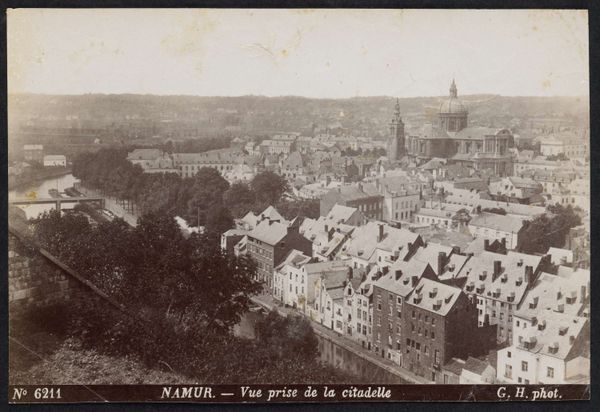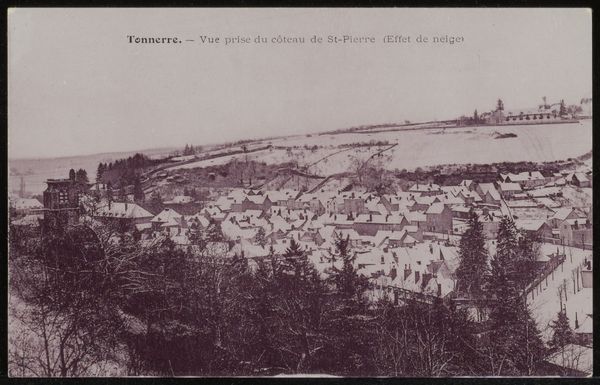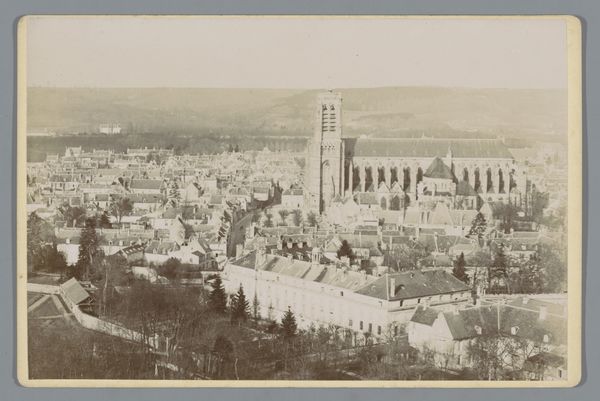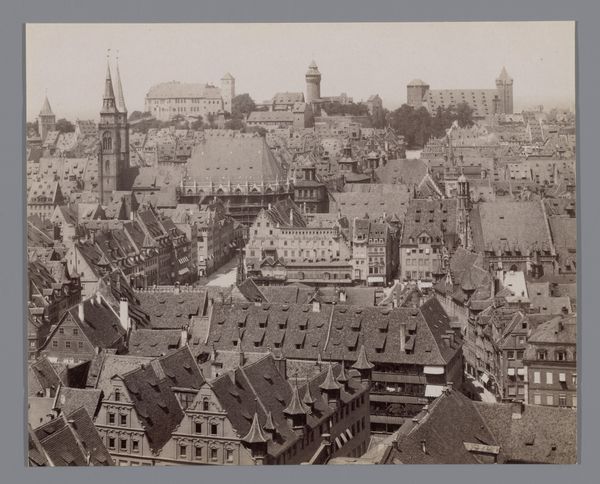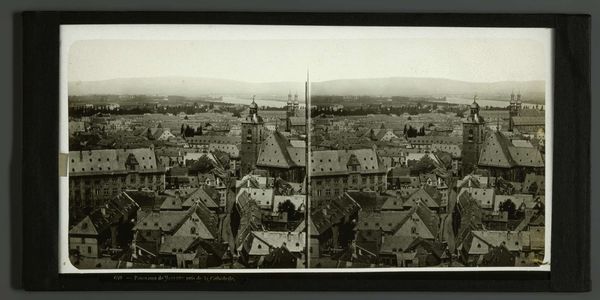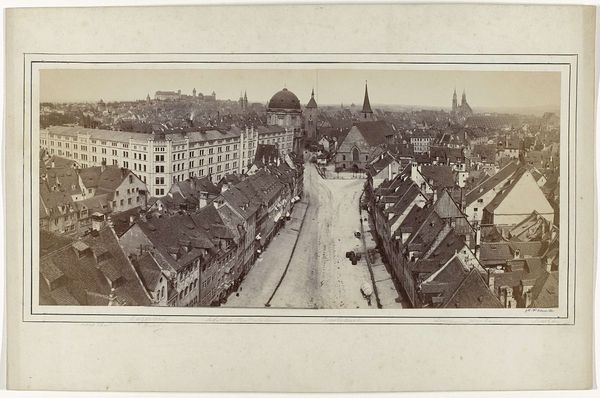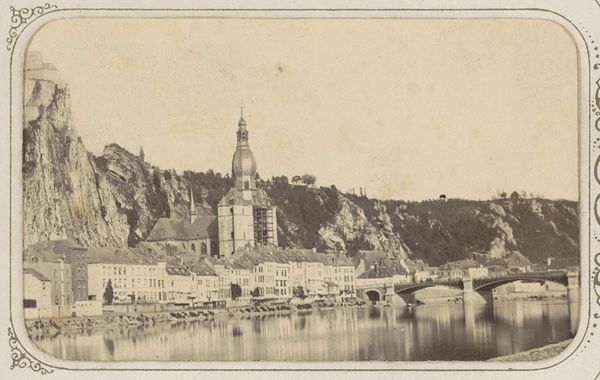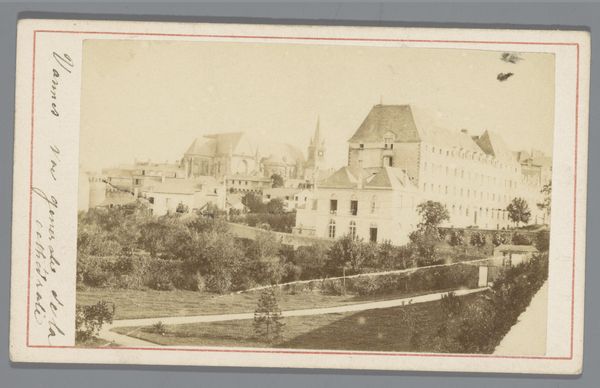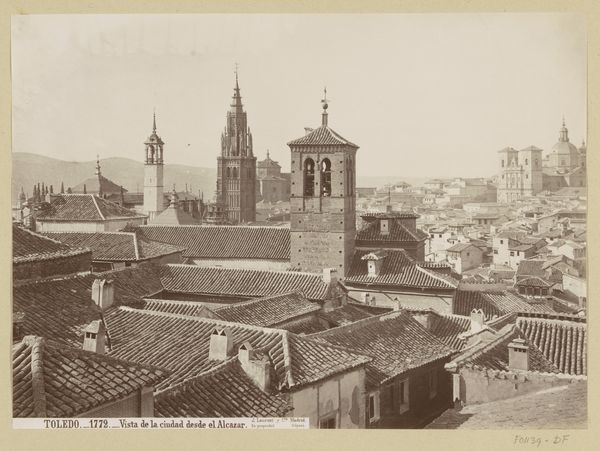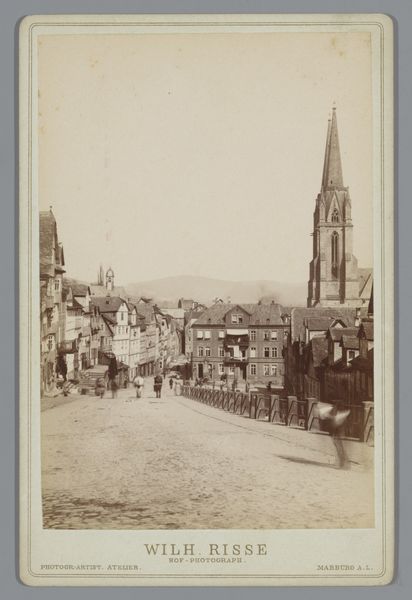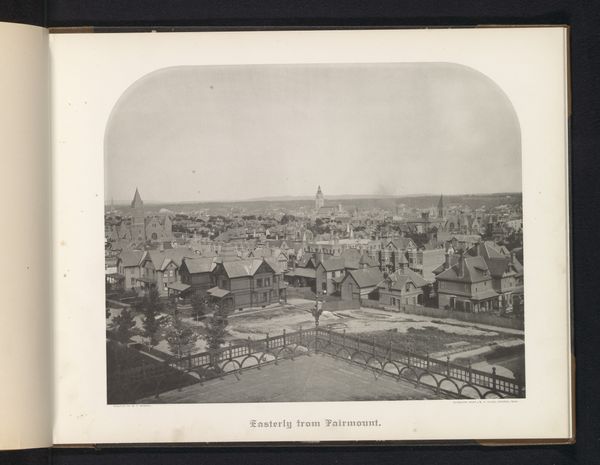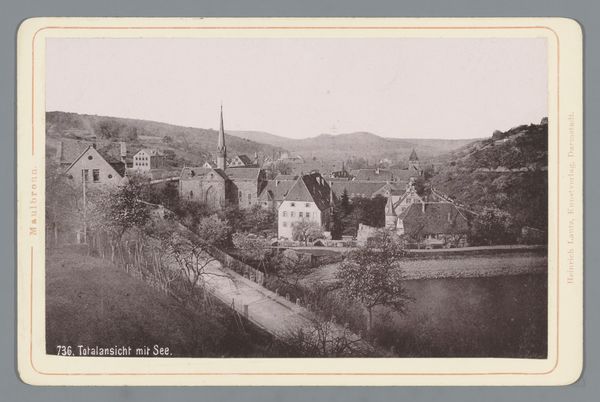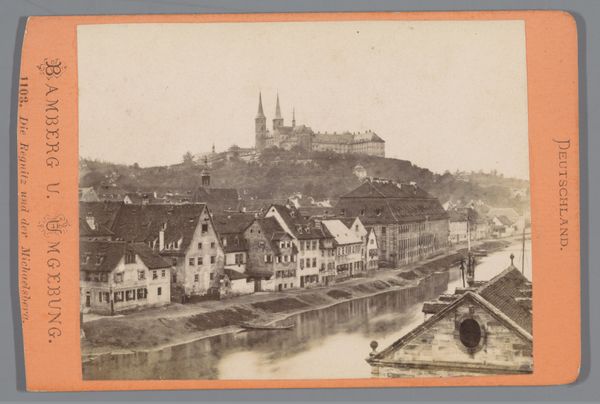
photography, albumen-print
#
landscape
#
photography
#
cityscape
#
albumen-print
Copyright: Rijks Museum: Open Domain
Curator: What strikes you most about this photograph? Editor: This is an old postcard titled “Prentbriefkaart aan Andries Bonger,” dating roughly between 1871 and 1936, with the photographer listed as Anonymous. It is a snow-covered cityscape created with an albumen print. I find the monochromatic effect, and the sharp clarity given the age, to be so interesting. It almost romanticizes what must have been the tough conditions for its residents. What are your thoughts about it? Curator: I see a clear demonstration of photography as a material process, reflecting the industrial advances that shaped artistic practices. The albumen print itself reveals a story of labor, involving the processing of egg whites, chemicals, and photographic techniques, to freeze a moment in time. This image’s value extends beyond mere representation; it becomes a social document tied to production and circulation. Editor: How so? Curator: Consider the choice of albumen print, a process made accessible by industrialization, leading to mass production and consumption of photographs. Postcards like these are indicative of the developing tourist industry; capturing scenic landscapes turned into commodities. Note also the traces of the photographer's hand in staging the shot and managing the chemicals – labor quite different from painting but labor nonetheless. Editor: That's fascinating; it shifts my perspective completely. I was so focused on the aesthetic. Curator: Precisely. Shifting away from solely aesthetic consideration allows us to evaluate the impact of industrialization and the shifting societal structure that influenced the production of the image. How might the ability to produce images on a large scale alter the consumption and valuation of photography versus painting? Editor: I suppose that mass production made it far more accessible. This photo captures not only a scene but an entire web of economic and social interactions of the time. Thanks for pointing that out. Curator: Indeed. Recognizing those processes transforms a simple cityscape into a poignant marker of societal shifts in how images are constructed, valued and circulated within the industrial age.
Comments
No comments
Be the first to comment and join the conversation on the ultimate creative platform.
